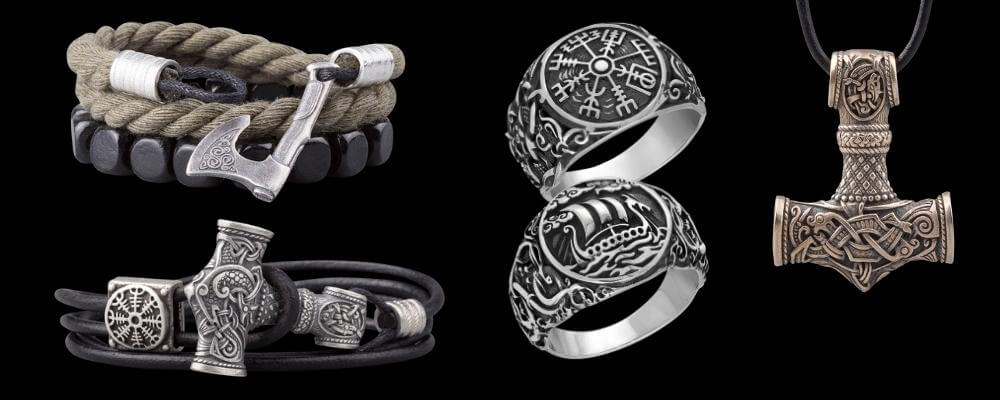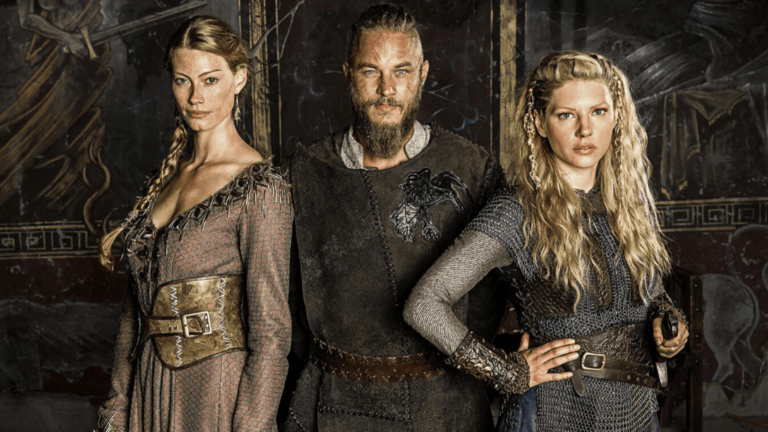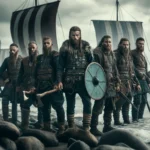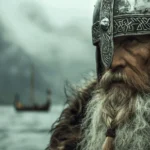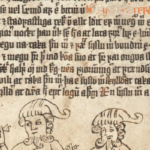The History Channel’s TV show Vikings has been largely responsible for a significant increase in popular interest in our Norse ancestors. Centering on the Viking chieftain Ragnar Lothbrok and his family, the show lifts the veil on the Viking world of the 9th and 10th centuries.
But, while the History Channel always endeavors to make their shows accurate, how much of what is depicted is true, and how much is fiction introduced for good entertainment? Which of our favorite characters really existed, and which of the most memorable events are fabricated?
Read on to find out as we look at eight things that are fabricated, as well as what the show gets right.
Warning! This article contains a few spoilers. If you haven’t seen the show, or you aren’t up to date with the latest episodes, beware.
1. The Underlying Story: Ragnar Lothbrok
So, where exactly did the creators of Vikings get the ideas and stimuli for their stories?
The show centers on Ragnar Lothbrok and his descendants, but Ragnar is more legend than historic figure.

Ragnar is known from the 13th century Saga of Ragnar Lothbrok, which is probably a record of earlier oral histories. See full article on Ragnar Lothbrok and his story.
While the character of Ragnar in the saga is probably based on a real chieftain that was active between 830 and 860, his life is surely embellished and probably includes events that belong to many other famous Vikings. The story of him slaying a dragon is a bit of a red flag.
2. Lagertha
Lagertha is one of the show’s most popular and important characters, but she is far less prominent in the surviving records of Ragnar’s life, where she features as only a minor character.
She is said to have been one of Ragnar’s wives, being a warrior in her own right that married Ragnar after helping him win a battle.

Together the two had three children, but none of the was Bjorn Ironside the king of Sweden, who was a son of Ragnar and Aslaug (more on her later). The two did divorce, like on the show, but this was so that Ragnar could marry the princess Thora, rather than Aslaug, who he only married later.
What seems to be accurate about Lagertha’s depiction on the show is that she was a fierce warrior in her own right. But this would have been the exception rather than the rule for Viking women.
While Viking women were taught to fight, this was to protect their homes while the men were off at war. If they did appear on the battlefield, it would have been as back up forces, rather than in positions of power. Historically, women like Lagertha would have been exceptional.
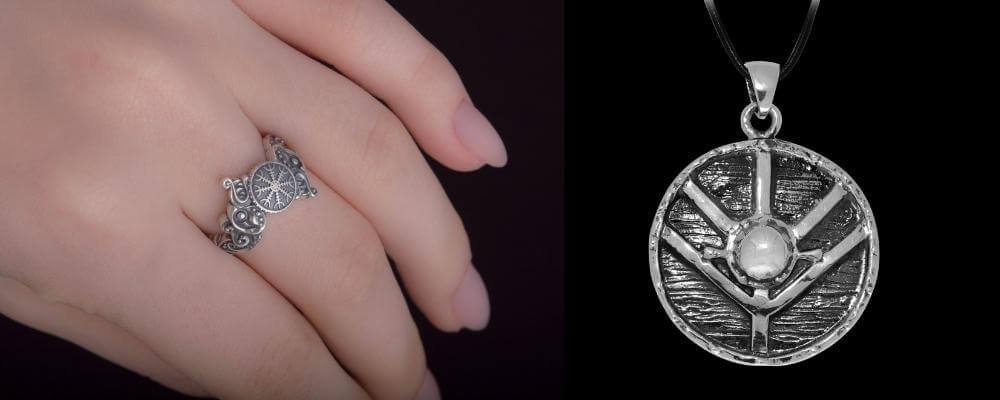
3. The Sons of Ragnar
One thing that is accurate about the show is that, according to the saga, Ragnar had several sons, all of whom were warriors in their own right and had their own fame that almost eclipsed that of their father. But there are a lot of problems with how they are depicted on the show.

First, while Ragnar and Lagertha had two daughters and a son together, he wasn’t Bjorn Ironside. When Ragnar divorced Lagertha, he married Thora, a daughter of the Earl of Gotland. Together they had two sons, Erik and Agnar, that do not appear in the show. Ragnar then went on to marry Aslaug.
The Aslaug depicted in the show strongly resembles the Aslaug of legend. She is said to have been the daughter of the hero Sigurd and the Valkyrie Byrnhildr, but they died when she was very young, and her parentage was hidden. She was said to have the power of future sight, just as she displays in the show.
Together Aslaug and Ragnar had four sons, the oldest being Ivar the Boneless, followed by Bjorn Ironside, Hvitser Ragnarsson and Sigurd Snake-in-the-Eye. Far from being nemeses, Ivar and Bjorn fought together alongside their other two brothers, with Ivar as their leader as he was the oldest and considered the best strategist.
Bjorn invaded England along with his brothers to gain vengeance for his father’s death, before making his way to Italy and then becoming the king of at least part of Sweden. Surprisingly, the depiction of Ivar as a warrior cripple may be accurate as he is described as having no bones his legs and being carried into a battle on a shield. But the reality of Ivar’s condition has been lost to time.
4. The brotherhood between Ragnar and Rollo
While Rollo of Normandy, depicted in the show, is certainly based on a true historic figure, he was no brother of Ragnar. He was probably born at least 50 years after our main protagonist, and it is actually unclear whether Rollo was a Viking at all.
Following the siege of Paris on 885-6 (see below) the real Rollo forged an alliance with the French king Charles the Simple and married his daughter. He used this connection to set himself up as the Count of Normandy in 911, and his lands were ruled by his descendants for generations.
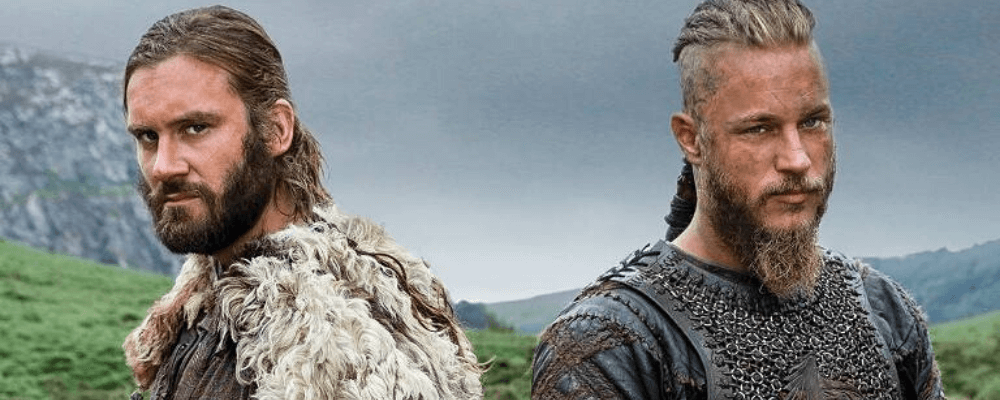
While Rollo is said to have participated in the Viking siege of Paris, it is unclear whether he was actually a Viking, or a warrior from other parts. After his marriage to the daughter of the king, he seems to have done everything he could to hide his background in order to be better accepted by his new Anglo-Saxon subjects and peers.
Rollo is described in the history books as a harsh and jealous man that ruled his lands with an iron fist. If he had been the brother of the infamous Ragnar, just like his avatar on the TV show, he would likely have found this a very hard pill to swallow.
5. Athelstan
Athelstan, another one of our favorite characters from the show, is very unlikely to have been a real figure. There is no record anywhere of a monk that became a Viking and then became a cleric that was a friend of Ragnar. The most famous Athelstan known from the history books was a grandson of Alfred the Great, the first king of England, and the show’s creators probably borrowed his name for this fictional character.

Another element of Athelstan’s character on the show that is certainly inaccurate is his death (spoiler – sorry). In the show, he is killed for abandoning his Christian ideals and consorting with the heathen Vikings. For this act, he is crucified. But the Christians of the day would never have crucified someone they considered a heathen. The crucifixion of Christ was a holy sacrifice, and to kill a heathen in this way was unheard of.
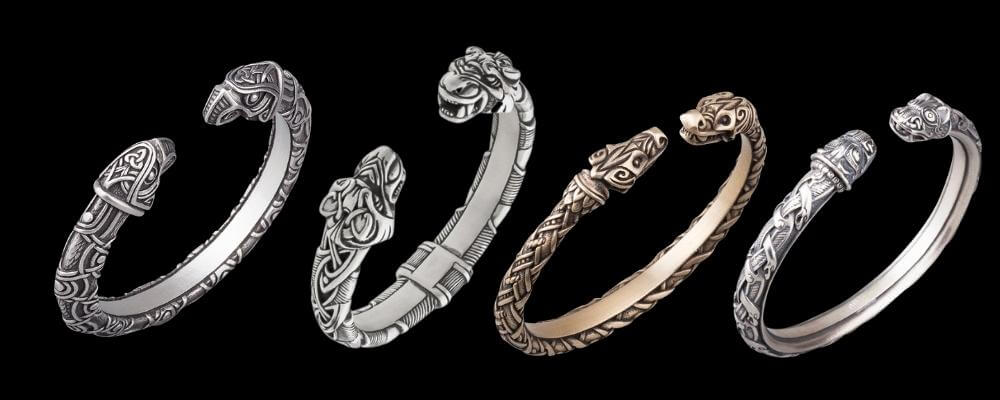
6. Floki
Floki is another character from other Viking stories that has been imported into the story of Ragnar to add interest and depth to the show. Floki Vilgertharson did sail to Iceland in the late 9th century, accompanied by his wife and children. He eventually settled there.
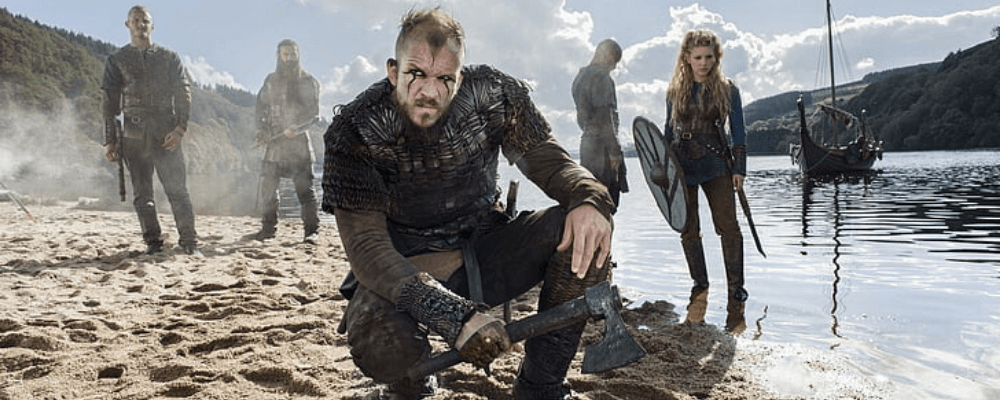
But the connection between Floki and Ragnar is entirely fabricated, as is his role as a revolutionary shipbuilder and his claim to be descended from the trickster god Loki.
7. Ragnar’s Invasion of Britain
The show’s creators have already admitted to extending Ragnar’s activities in Britain. They had initially decided to kill Ragnar at the end of season one, but he proved so popular that they kept him for a further four seasons.
In the saga, Ragnar only made one arrogant raid on Britain, sailing with only two ships, boasting that this was all he needed to conquer the island. He was quickly defeated by King Aella of Northumbria, who is said to have killed Ragnar by throwing him into a snake pit, as depicted on the show.
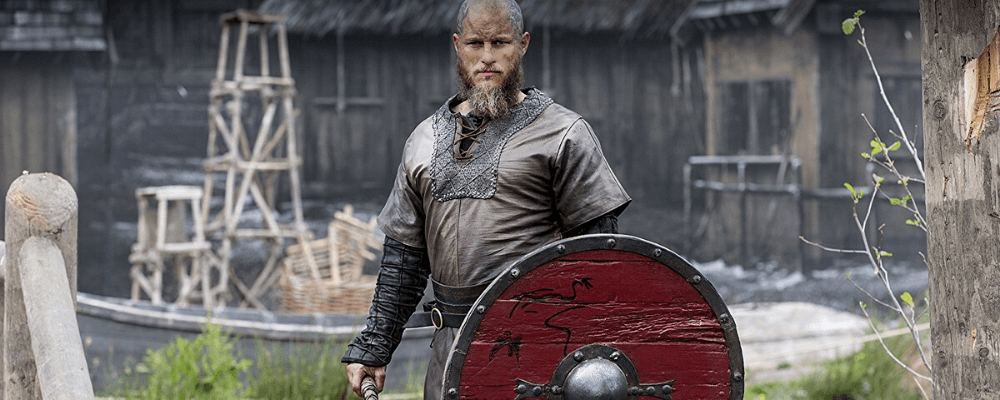
But all of Ragnar’s other activities in Britain, such as his interactions with the King of Wessex, are pretty much fabricated or borrowed from other Viking chieftains that lived much later, all to extend Ragnar’s storyline.
8. Raids on Paris
In contrast to Ragnar’s activities in Britain, where the History Channel extends his storyline, when it comes to the raids on Paris, two separate raids that were undertaken by different Viking chiefs 40 years apart are amalgamated.

The primary raid on France’s capital that forms the core of the story happened in 845, but it was far from a heroic occasion. The Vikings pretty much walked into a deserted city that had already been stricken by dysentery. The Vikings still took the city, and were eventually paid to depart by King Charles. But more Vikings died of dysentery than in battle during this raid.
The later raid happened in 885-886, and the Vikings failed to breach the walls. The role ascribed to the daughter of King Charles, Gilsa, in this interaction is entirely fabricated, as she was probably only a child of around 5-10 years at the time.
In the TV show, the Vikings are also depicted hauling their ships across land in order to attack Paris. While this is something that the Vikings did, it is not recorded in the case of either of the sieges of Paris.
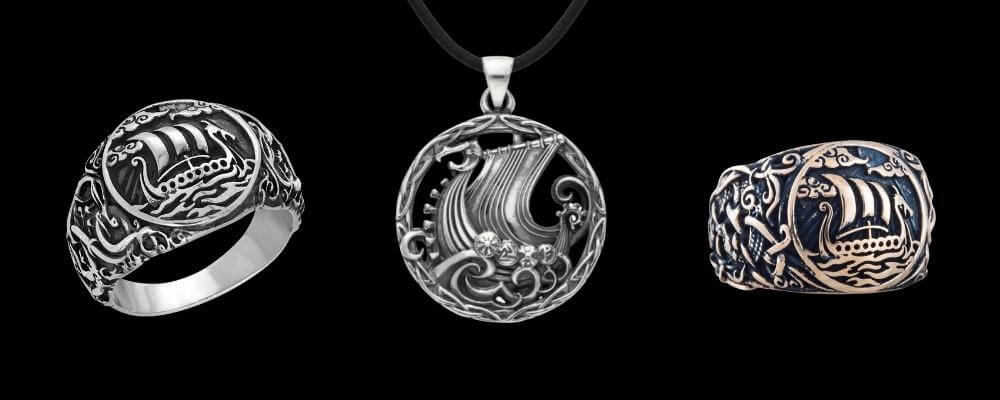
So, What’s Real?
There are many more inaccuracies, fictional characters and historical fabrications that could be pointed out about the show. Needless to say, the creators took some license in order to develop compelling storylines that would capture and intrigue audiences. But while liberties have been taken, the show’s creators have successfully created a world that resembles what it would have been like to live in Viking times.
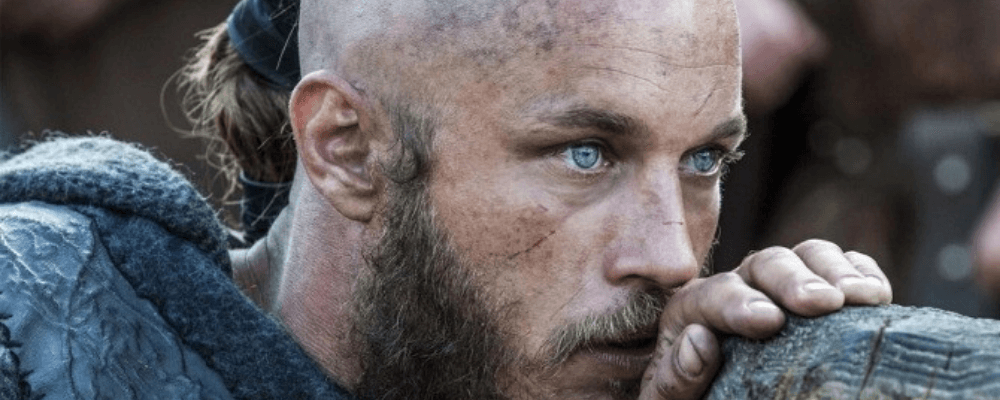
The sets, costumes, and material culture have all been meticulously researched to resemble the real thing. The black eye makeup, impressive beards, and braided hair are all true to what we know of the Vikings.
The armor worn by the warriors is also accurate, as they wore relatively light vests that helped protect their vital organs, but gave them the freedom to move. It is also reassuring that there is not an Asterix-style horned helmet in sight. The Vikings never wore these. They were impractical and just gave the enemy one more thing to grab on to.
The intense violence of the period, and the bloodthirsty, warrior attitude of the Vikings, is also accurate. The Vikings believed that there was no better way to die than on the battlefield, and that it was the right of the strong to dominate the weak. The tenuous nature of Viking kingship and the constant power battles are also authentic to the culture.
One part of the battles that is not authentic are the pitched battles that we see on the show. While the creators of the show have used this familiar set-piece to ground audiences in the action, the Vikings almost never fought in this way. They were raiders who relished the advantage and the element of surprise. They were guerrilla warriors and not Roman infantry with cool hair.
While the show focusses on the elites and the warriors, it also reveals other elements of Viking life. We encounter fishermen, boat builders, and textile manufacturers. We see people completing day to day activities such as cooking, playing games, and combing their hair, all with meticulously researched historical accuracy. The insights offered into Norse religion, and the conflict with Christianity is also true to what we know of the period.
The result of all this attention to detail? While some of the characters and the events that we see in Vikings may differ significantly from what we know of history, overall the show creates a Viking world that is largely historically accurate, and gives viewers a genuine taste of what it was like to be a Viking.
What do you think of the History Channel’s Vikings?
